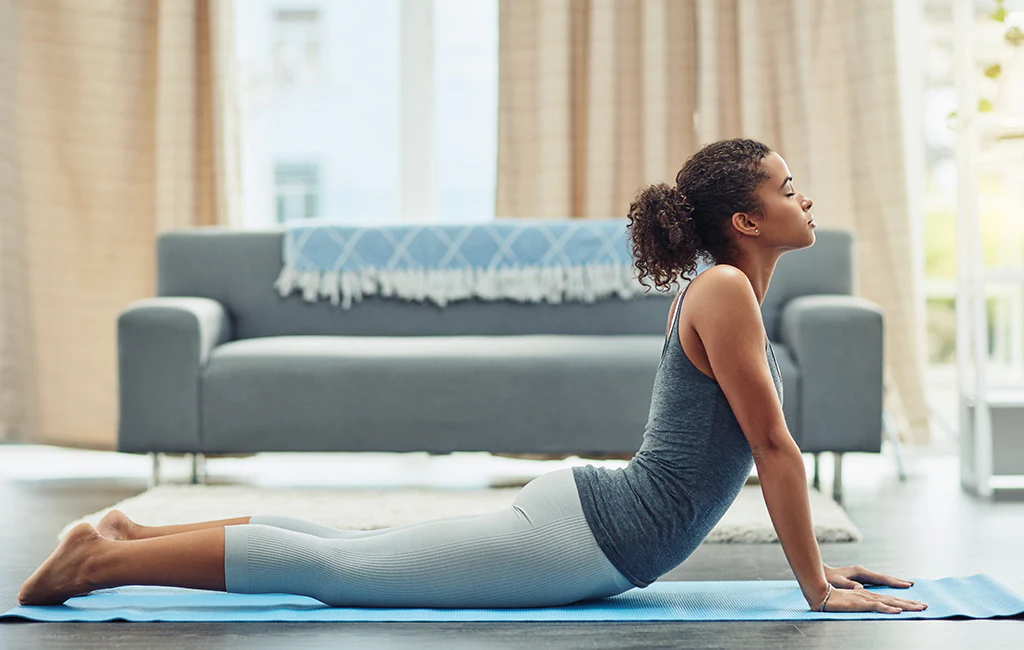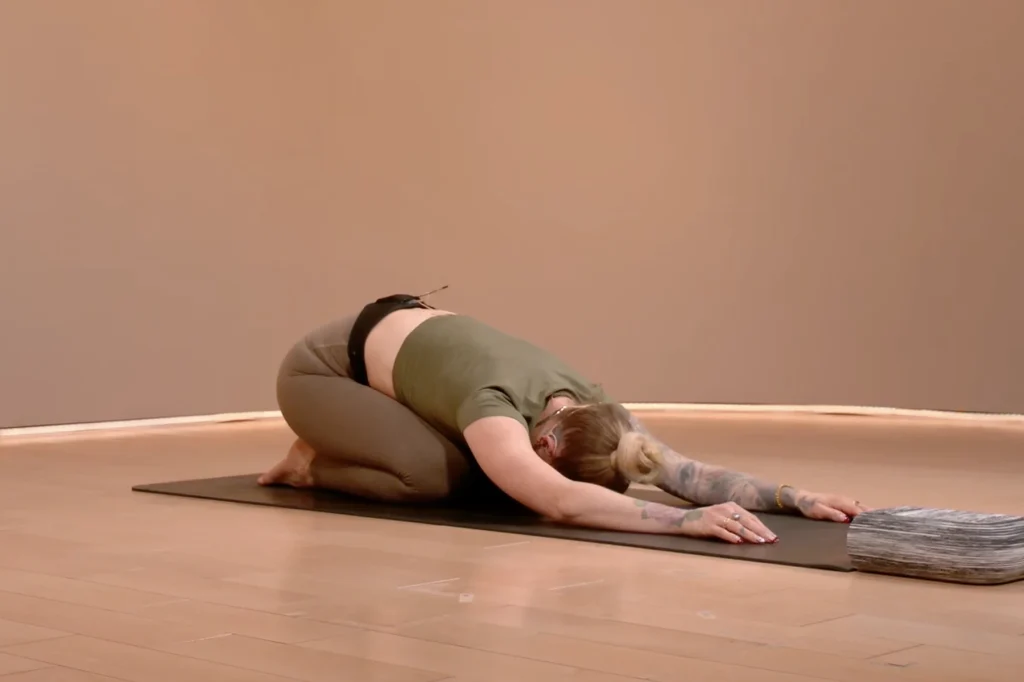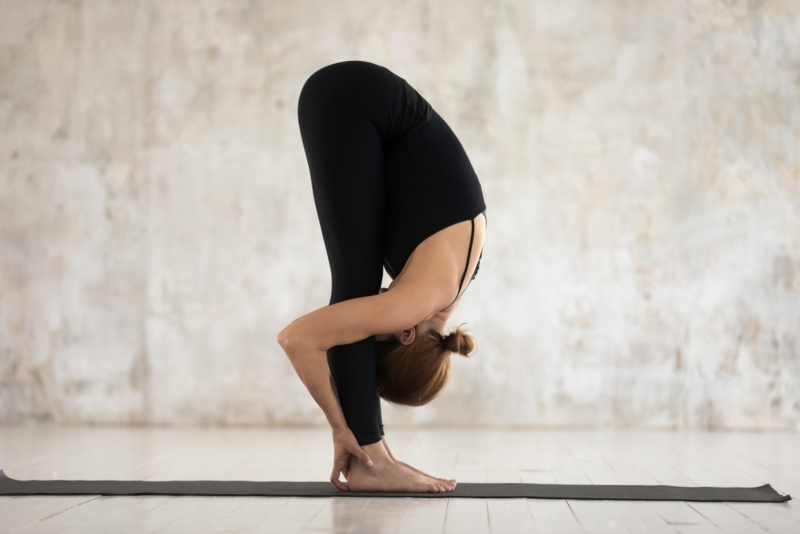Yoga poses for stress relief

In today’s fast-paced world, stress has become an almost constant companion. From work deadlines to family responsibilities, it can feel like there’s no escape from the pressures of daily life. While there are many ways to manage stress, yoga stands out as an effective and holistic approach. Combining movement, breath, and mindfulness, yoga not only strengthens the body but also calms the mind. Here’s a guide to some of the best yoga poses for stress relief, along with tips on how to incorporate them into your routine.
1. Child’s Pose (Balasana)

Child’s Pose is a gentle, restorative pose that helps release tension in the back, shoulders, and neck—areas where stress often manifests. To perform this pose:
- Kneel on the floor, touch your big toes together, and sit back on your heels.
- Spread your knees hip-width apart and fold forward, bringing your forehead to the mat.
- Stretch your arms out in front of you or let them rest alongside your body.
- Close your eyes, breathe deeply, and stay in the pose for 1–3 minutes.
This posture encourages relaxation, slows the heart rate, and promotes a sense of security and comfort.
2. Cat-Cow Pose (Marjaryasana-Bitilasana)
The Cat-Cow sequence is a gentle flow that warms up the spine and relieves tension in the back and neck. It also helps regulate breath, which is key for stress relief. To practice:
- Start on your hands and knees with wrists directly under shoulders and knees under hips.
- Inhale, arch your back, lift your tailbone, and open your chest (Cow Pose).
- Exhale, round your spine, tuck your chin toward your chest, and pull your belly in (Cat Pose).
- Continue this flow for 1–2 minutes, synchronizing movement with your breath.
This pose not only increases spinal flexibility but also helps release built-up stress from the upper body.
3. Standing Forward Bend (Uttanasana)

Forward bends are known for their calming effect on the nervous system. Uttanasana stretches the hamstrings and back while encouraging the mind to let go of tension. To do it:
- Stand with feet hip-width apart.
- Hinge at your hips, folding your torso over your legs.
- Let your head hang heavy and soften your neck.
- Keep a slight bend in the knees if needed and hold for 30–60 seconds.
This pose stimulates the parasympathetic nervous system, which promotes relaxation and reduces stress levels.
4. Legs-Up-The-Wall Pose (Viparita Karani)
Legs-Up-The-Wall is a restorative pose that improves circulation and calms the mind. It’s especially useful after a long day of standing or walking. To practice:
- Sit sideways next to a wall, then lie back and swing your legs up against the wall.
- Keep your arms relaxed by your sides and close your eyes.
- Breathe deeply and stay in this position for 5–10 minutes.
This pose relieves tension in the legs and lower back, lowers heart rate, and encourages a meditative state.
5. Seated Forward Bend (Paschimottanasana)
Seated Forward Bend is a calming pose that stretches the entire back of the body while encouraging introspection and mental focus. To perform:
- Sit on the floor with legs extended straight in front of you.
- Inhale, lengthen your spine, and exhale, folding forward from the hips.
- Reach for your feet, ankles, or shins, depending on your flexibility.
- Stay here for 1–3 minutes, breathing slowly and deeply.
This pose helps release tension in the spine and shoulders while calming the nervous system, making it excellent for stress relief.
6. Corpse Pose (Savasana)

No stress-relief yoga practice is complete without Savasana. Often practiced at the end of a yoga session, it allows the body and mind to fully absorb the benefits of previous poses. To practice:
- Lie flat on your back with arms at your sides, palms facing up.
- Keep your legs comfortably apart and relax your entire body.
- Close your eyes, focus on your breath, and stay in this position for 5–10 minutes.
Savasana reduces blood pressure, calms the mind, and provides deep relaxation, making it one of the most effective poses for stress relief.
Tips for a Stress-Relief Yoga Routine
- Consistency is key: Even 10–15 minutes a day can significantly reduce stress over time.
- Focus on breath: Slow, deep breathing enhances the calming effects of each pose.
- Create a peaceful space: A quiet, comfortable environment helps the mind settle.
- Use props: Blankets, cushions, or yoga blocks can make poses more comfortable and restorative.
Conclusion
Yoga offers a powerful way to manage stress naturally. By combining gentle movement, mindful breathing, and relaxation, these poses help release tension, calm the nervous system, and promote mental clarity. Whether you have a few minutes or an hour, incorporating these poses into your daily routine can transform stress into a sense of calm and well-being.
